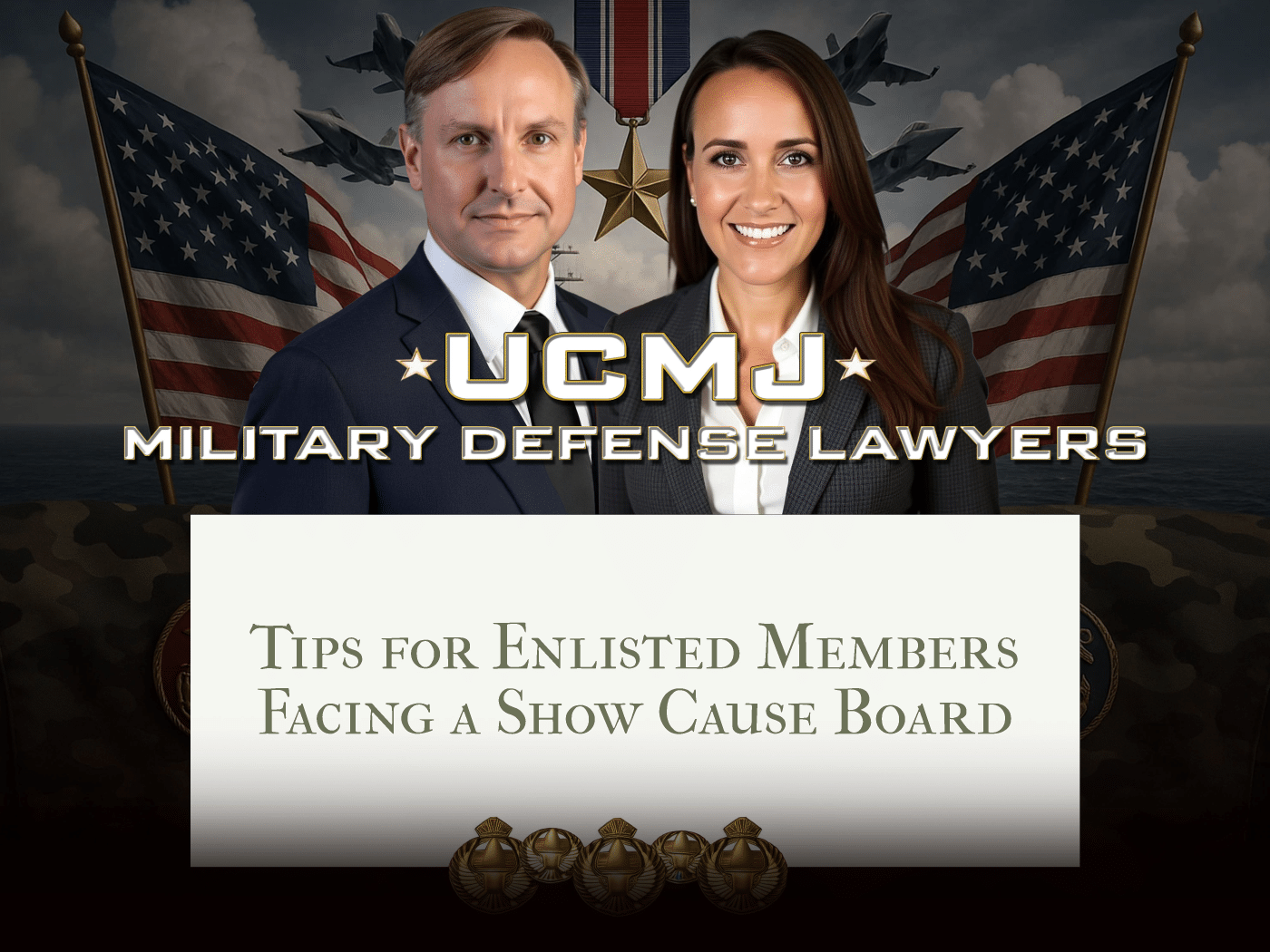Facing a Show Cause Board can feel overwhelming, especially for enlisted service members who have dedicated themselves to military service. If you or someone you know is dealing with this process, you’re likely grappling with anxiety, uncertainty, and many questions. Whether it’s your first experience or you’ve seen a colleague go through it, understanding Show Cause Board Enlisted Tips early in the process can make a significant difference. It’s not just about defending your career—it’s about protecting your future, your reputation, and your peace of mind. This guide was created to empower enlisted members with the knowledge they need to approach a Show Cause Board with clarity and preparation. Since every detail counts in these situations, we’ll walk through the key aspects, real-world impacts, and valuable insights from professionals who’ve helped service members navigate these stressful proceedings. By the time you finish reading, you’ll be better equipped to respond proactively and confidently. Let’s dig in to help you take back control.
Understanding the Basics of Show Cause Boards for Enlisted Members
A Show Cause Board is a military administrative proceeding designed to evaluate whether an enlisted service member should be separated from the armed forces due to misconduct, substandard performance, or other significant concerns. These boards are initiated when a commanding officer believes a member may no longer be fit to continue service. For enlisted personnel, this can be frightening, particularly when they feel they aren’t being heard or understood.
For instance, a member with outstanding service records may suddenly receive notification due to a single failed fitness test or a one-time error in judgment. Another may face a board after receiving a civilian conviction, even if it appears unrelated to military duties. In both scenarios, the goal of the Show Cause process is to determine whether retention is in the best interest of the service.
While the term “Show Cause Board” can sound intimidating, it essentially provides a chance for the service member to present their case. Understanding your rights, responsibilities, and best practices for this process is crucial. That’s why knowing key Show Cause Board Enlisted Tips can make all the difference when navigating this system effectively.
The Importance of Preparing for Show Cause as an Enlisted Member
The consequences of a Show Cause Board can be life-altering, affecting every area of a service member’s career and future. For enlisted personnel, who often have fewer resources or support than officers, preparation is not just important—it’s essential. The decision rendered by this board can result in retention, discharge, or other career-impacting actions. The process allows the military to evaluate behavior and performance, but it also grants the enlisted member an opportunity to defend their record and character in a formal setting.
In many cases, the outcome depends heavily on the preparation leading up to the board. This goes beyond simply telling your story—it means gathering documentation, securing legal support, and articulating your contributions to the military with clarity and confidence. With your career and benefits on the line, proper planning and trusted guidance are key. Below are three common scenarios showing just why preparation matters.
- A decorated enlisted member faces a board after a positive drug test. Lack of counsel leads to an unfavorable discharge and loss of all benefits.
- An enlisted member is accused of dereliction of duty. Through legal preparation and command character references, they are retained with a career development plan.
- A service member is under review for poor performance. Without understanding the process, they miss deadlines and are involuntarily separated months before retirement eligibility.
Step-by-Step Breakdown of How the Show Cause Process Works for Enlisted Members
- Step 1: Notification – You’ll receive formal written notice that a Show Cause Board has been initiated. This will outline specific allegations or issues prompting the review.
- Step 2: Preparation period – You are typically given time to consult counsel, gather documentation, and prepare a response. This is your window to shape your defense and present supporting evidence.
- Step 3: Board proceedings – A panel (often comprised of senior enlisted members and officers) will hear both sides. You can speak, submit documentation, and be represented by legal counsel. The board then makes a recommendation regarding retention or discharge.
Top Expert Suggestions for Handling a Show Cause Board Confidently
Common Questions Enlisted Members Ask About Show Cause Boards
How Gonzalez & Waddington Helps Enlisted Clients Succeed
At Gonzalez & Waddington, we understand the emotional and professional stress that accompanies a Show Cause Board notification. Our experienced legal team has represented service members around the world in every branch of the military. With decades of courtroom and administrative board experience, we offer more than just legal counsel—we provide confidence during times of uncertainty. Our firm approaches each case with personalized strategy, protecting your reputation and career with precision and dedication. Whether it’s building a compelling case or preparing you for testimony, we remain committed to helping you navigate complex military legal systems without feeling alone. Trust our team to advocate aggressively and ethically on your behalf, giving you the peace of mind you deserve.



